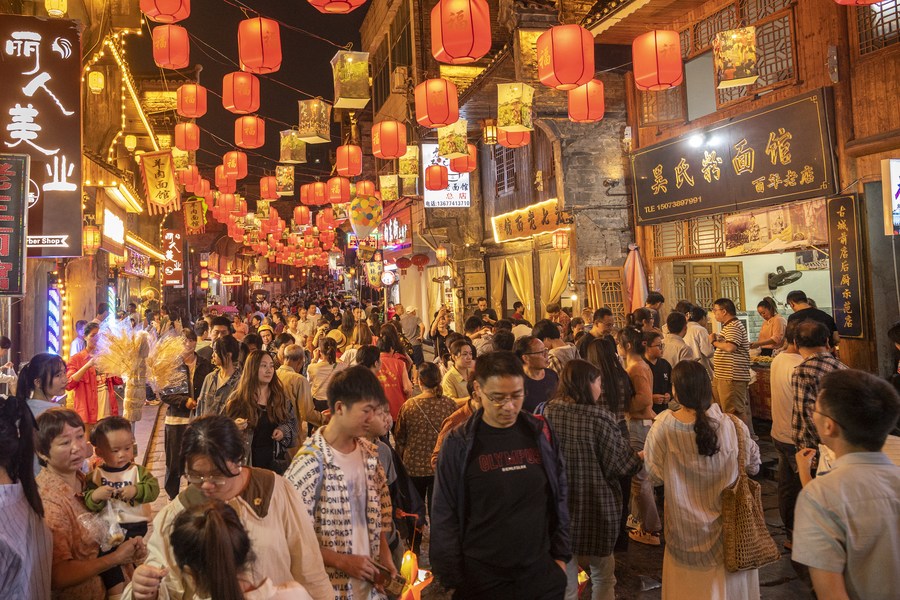BEIJING: Chinese residents’ fervor for travel and leisure over the eight-day Mid-Autumn Festival and National Day holiday has reflected the country’s strong consumption demand.
From top domestic destinations such as Beijing, Shanghai and Hangzhou, to cities in the northwest like Urumqi in Xinjiang Uygur Autonomous Region, resorts across the country were flooded by visitors during the holiday. Experts say the bustling scenes demonstrate the vitality and potential of China’s consumer market, which will help boost economic recovery and strength.
The National Day holiday, dubbed “golden week” by the Chinese, normally runs for seven days, but this year, it was linked with the traditional Mid-Autumn Festival and extended to eight days, lasting from Sept. 29 to Oct. 6. A longer holiday rekindles people’s enthusiasm to travel, especially after the removal of travel restrictions seen during the COVID-19 pandemic, and enables them to engage in various leisure activities. During the eight-day holiday, Chinese people made 826 million domestic tourist trips, an increase of 71.3 percent from last year and 4.1 percent from 2019, according to the Ministry of Culture and Tourism.
The total revenue of the tourism sector increased by 129.5 percent year on year to 753.4 billion yuan (103.2 billion U.S. dollars) during the period, said the ministry.
In southwest China’s Sichuan Province, over 29 million trips were made in the first six days of the holiday, skyrocketing 202 percent compared with the same period last year. Hangzhou, capital city of east China’s Zhejiang Province, is hosting the 19th Asian Games and thus drawing many tourists aiming for both its picturesque West Lake and sports games. As of Wednesday, the ticket revenue of the Games has exceeded 600 million yuan.
The booming tourism has driven the high demand for flights and train tickets, hotel rooms, catering, and retail sales. –Agencies






